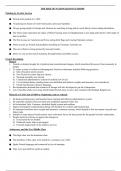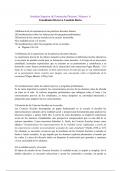Summary
Summary The Rise Of Nationalism In Europe Handwritten notes to score 95+ marks in exams
- Course
- Institution
- Book
My Document contains history chapter 1 the rise of Nationalism In Europe Handwritten notes...that tells you the the history of Europe...about napoleon code...liberalism....the Balkan region ...Fredericc sorrieu painting that help you to score 95+ in exams
[Show more]




